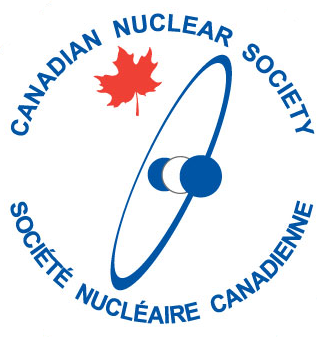What are the types of nuclear waste and how are they managed?
When discussing nuclear waste, most people focus on spent nuclear fuel, which is one type of high-level waste. High-level waste only accounts for a very small amount (0.5%) of the radioactive waste produced in Canada. Since Canada’s reactors first went online in the 1960s they have produced 2.6 million fuel bundles. [1] While this may seem like a lot at first, all these bundles could fit into seven hockey rinks without passing the height of the boards.
There are three categorizations for nuclear waste: High, intermediate, and low. With varying levels of precautions needed. The diagram below shows who is in charge of handling the different levels of waste.
![Organizations responsible for the long-term management of used fuel and radioactive waste in Canada [2]](https://www.cns-snc.ca/wp-content/uploads/2021/12/tree.png)
High-level waste includes spent nuclear fuel, limited waste from the production of medical isotopes, some waste from uranium mining and milling, or any waste still generating significant heat through radioactive decay. The highest level of precaution needs to be considered when dealing with high-level waste because of the type and level of radiation. Of high-level waste, the majority of it is spent on nuclear fuel, which is also what most people are curious about.
When a fuel bundle is no longer able to help sustain nuclear chain reactions in a reactor it’s said to be ‘spent’. Spent fuel bundles are removed from a reactor, and immediately submerged in Olympic-sized pools that dissipate heat and shield radiation. These are constructed with 2-metre thick carbon steel-reinforced concrete and are fully functional autonomously using robots. These pools are seismically sound and stored separately from the reactor, since Fukushima, portable generators and pumps have also been on standby as an added precaution.
The spent fuel bundles spend the next 6 to 10 years in these pools, with about 5000 bundles per reactor added each year. It should be noted that after 1 year these bundles are just above atmospheric temperature but still spend the rest of the time in the pool to let the radioactive decay process continue to slow down the radioactivity.
After years of cooling in the pools, the bundles go into a longer-term holding area: dry storage. This can be large concrete canisters, like at Point Lepreau Generating Station, which can hold up to 600 bundles and is suitable for a smaller facility. At Gentilly-2 large storage facilities were created, which could hold up to 12,000 bundles of fuel. The last more used approach is dry storage containers. At Pickering, Darlington, and Bruce, large steel-reinforced concrete containers have been used. With a smaller capacity of 384 fuel bundles. Eventually, these bundles will be moved to a Deep Geological Repository. To learn more about this visit our DGR page.
| Waste Type | Volume (Cubic Meters) | % of Total |
| Low-Level | 2,524,670 | 98.9% |
| Intermediate-Level | 15,681 | 0.6% |
| High-Level | 12,718 | 0.5% |
| Total | 2,553,069 | 100% |
(data as of December 31, 2019) [3]
Intermediate-level waste is made of long-lived radionuclides in concentrations that require isolation and containment for greater than several hundred years. This waste is often refurbishment waste, ion-exchange resins, and radioactive sources used in radiation therapy. Owners of intermediate-level waste are responsible for safely handling their waste, usually on-site. Intermediate level waste doesn’t produce enough heat to need to submerge it underwater to keep it cool, but it is contained to keep radioactive particles from escaping.
Low and Very low-level radioactive waste needs to be managed as well, and make up the bulk of the volume of radioactive waste. This waste includes contaminated equipment from operating nuclear power plants: protective shoe covers, clothing, rags, mops, equipment, and tools. The contamination makes this waste unable to be disposed of like normal trash, but these don’t need to be nearly as carefully contained or isolated because the radioactivity levels are low.
Some waste is very short-lived and low level. This type of waste can be stored until its radioactive decay makes it negligibly radioactive, usually within a few years, and subsequently, it can be released without radioactive monitoring (because it isn’t radioactive anymore). This is usually waste from biomedical and research activities and has a short half-life of radionuclides, (100 days or less).
Usually, the owners of the intermediate and low-level waste are responsible for it, some organizations like Canadian Nuclear Labs can manage the waste for a fee.
Citations
- NUCLEAR WASTE MANAGEMENT ORGANIZATION, Nuclear Fuel Waste Projections in Canada, NWMO-TR-2020-06, NWMO, Toronto (2020).
- http://nuclearsafety.gc.ca/eng/waste/index.cfm
- https://www.nrcan.gc.ca/our-natural-resources/energy-sources-distribution/nuclear-energy-uranium/radioactive-waste/7719
